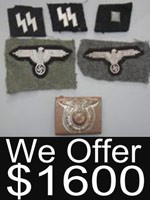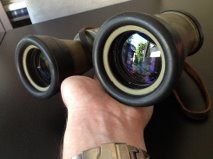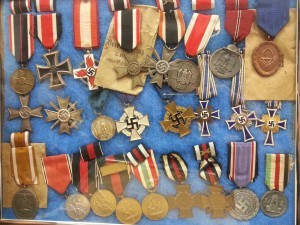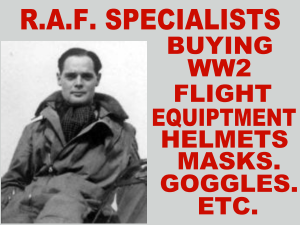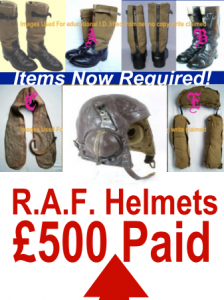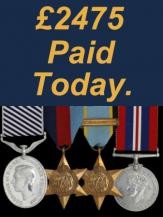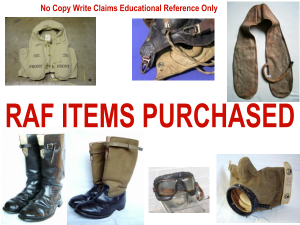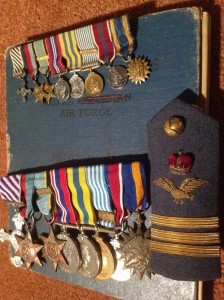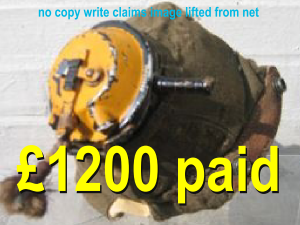WANTED BATTLE OF BRITAIN
Welcome to WW2Buyer.com
David Mattey of WW2Buyer.com
is a conscientious dealer with over 40 years experience in the purchase and sale of Medals ,Decorations , Arms and Militaria.

David who has worked from his high street premises for the last twenty years acts as buyer to city investment groups ,Advanced collectors and the premier specialist websites.
David believes that investors are happy to pay a premium for expertise, research and unconditionally guaranteed exhibits.
WW2Buyer.com are engaged in the purchase of Allied And Axis Uniforms ,Daggers,Medals, Awards, Orders, Decorations and associated “Militaria.
If you believe you have already obtained a fair offer David welcomes the opportunity of offering a confidential second opinion.
Call or e-mail davidmatteybuyer@gmail.com today for free advice and valuations. please feel free to use the contact form provided.
Our offers and valuations both free of charge and confidential.
If you have by your own research, established an asking price or obtained bids from other parties.
Please include offers in your communications.
WW2Buyer.com are not in the business of haggling if we can see modest margin we will advance payment today.
Before consigning militaria for sale by auction please be aware that 35%-44% of the total paid by the buyer will be lost to the auctioneer. If you have obtained suggested reserve figures from auctioneers
WW2Buyer.comwill pay 100% of these immediately.
Contact: David Mattey
Tel: 01903-884602 Mobile 07860747027
or e-mail:davidmatteybuyer @gmail.com

( PRE 1941) NAMED FLYING HELMET AND OXYGEN MASK £7,500 OFFERED !.

How have we arrived at such a price?

The components ,goggles ,oxygen mask, etc probably have the sum value of £3000. If you have a rig which has been put together using 100% original period parts The £3000-£3500 is it’s likely value .

If you have inherited Flying equipment and can provide provenance then your items will be worth 150% more than the junk you see on EBAY.

Regrettably auction sites are awash with put together RAF Groupings so should you place you 100% original items for sale as an anonymous vendor you are unlikely to find a buyer.

At WW2 buyer we do not have to take your word we research what you show us and pay the correct price.

If however you unearth a complete BoB rig which is named to a pilot then £7500 could be coming your way. If you were looking for more you could consign it for sale with us and we would try it at £10,000.

The Battle of Britain is the generally the strongest arena of WW2 British collecting To discover a complete pre 1941 flying rig is very unlikely, In an open market

RAF Flying Equiptment Dealers

RAF DEALERS
For a fast track offer/free valuation simply complete our confidential form → →
RAF DEALERS
For a fast track offer/free valuation simply complete our confidential form → →
RAF Fighter Pilot 1940 Battle of Britain.
Fighter Command pilot of 1940.
RAF kit of a pilot of the period of WW2

Full lower pockets,. R.A.F.Other Ranks just flaps. R.A.F officer’s plain cuffs, Other Ranks’s faux French Cuffs .
R.A.F.Air gunner’s Tunic
R.A.F. Insignia.
RAF Pilot’s Wings (King’s Crown). These measured about 4inches (100mm).
R.A.F.Group Captain’s
Pictured Below R.A.F. Other Rank’s Rank chevrons,
shoulder insignia (one each sleeve, beak rearwards)
and an R.A.F button.
The button above is not WW2 to differentiate the Queen’s Crown here being substituted for a King’s Crown.Pocket buttons are smaller.
Image (d) R.A.F.Life Vest.Image (e)
life vest is the 1932 pattern. The stole was inflated by mouth- no gas canisters were used to inflate the vest.
Khaki or grey/green cotton, with instructions for use stenciled on the front of each lobe and by the zip behind the neck in black ink. It was common during the Battle of Britain for pilots to paint the front of the lobes with chrome yellow aircraft paint to aid visibility. Some Canadian-made 1932 vests were made from yellow cotton with the stencils applied over the top.
Image (c) R.A.F. Stole: Image (e) R.A.F. Kapoks:
RAF Flying Equipment Dealers Require
1936 pattern flying boots.Image (B) Made of chromed black leather and lined with thick fleece. They had leather pullers sewn inside to aid putting them on, and a tightening strap and buckle across a V shaped opening at the top front. 1939 pattern .R.A.F. flying boots. Of the same pattern as the 1936 boots, with green vulcanized canvas uppers. The first style had a webbing top strap, later ones a leather strap similar to the 1936 pattern.
RAF Flying Equipment Dealers Require
R.A.F. Flying Helmet.
The flying helmet is the B-Type. This was the standard flying helmet issued to all aircrew between 1936 and 1941. It was made from leather and lined with chamois.
A layer of cotton padding of varying thickness depending on manufacturer was added between the outer leather shell and the chamois lining.
The leather chin strap closed with a friction type Bennett buckle, and there was a similar strap and buckle fitted across an opening at the back of the helmet which allowed for a tight fit and easy removal. As manufactured the helmet didn’t have the distinctive leather domes to house the communications equipment.
Two large domed leather ear pieces were issued with each helmet so they could be positioned and sewn into position by the station tailor.
This meant that each helmet was custom fit for each wearer. The ear pieces had circular chamois pads which rested against the ears to help reduce outside noise. Rubber or plastic cups inside the earpieces retained the Gosport receivers, which were surrounded by large sponge rubber cushions to further reduce noise interference. Zips provided access to the equipment.
No straps were attached for holding goggles, though some helmets were later fitted with brass guide plates which were issued with the Mk IV goggles. Two snap fasteners were fitted to each side of the facial aperture to enable an oxygen mask to be fitted.
The helmet below shows a later modified one where snap fasteners have been custom fitted to face outside for use with later rubber oxygen masks. It gives a good idea as to the construction of the helmet from the various panels of leather- there is a central spine of leather from front to nape of neck which the other parts are sewn to. It is in the centre of this spine at the nape of the neck where the opening is. It also gives a good view of the Bennett buckles.
RAF Flying Equipment Dealers Require
R.A.F.Oxygen Mask and Microphones.
The only oxygen mask in RAF service at the time the war broke out was the D Type constant flow pattern.
Made from green melton wool with a chamois lining. It attached to the B type helmet by four snap fasteners (two on each side), though in some period photos it is seen attached by other methods, such as using a strap from a pair of flying goggles.
A metal ring at the front provided an attachment point for a microphone or an issued plain chamois covered, metal blanking cap. It also housed the oxygen inlet port.
There was a gusset under the chin

RAF Flying Equipment Dealers Require

The mask could be fitted with three different types of microphone. militaria dealers

The type E carbon which was bell shaped and covered in chamois. Introduced in 1935.

RAF Flying Equipment Dealers Require

The type 19 magnetic microphone which was flat fronted and again chamois covered, Introduced in January 1939.

Lastly, the type 21 magnetic, which was introduced after the Battle of Britain in October 1940, and was black lacquered.

RAF Flying Equipment Dealers Require
This photo of the type21 shows the connectors for the microphone and the oxygen. The microphone connector plugged into a socket in the cockpit. The oxygen connector attached to an oxygen bottle which was usually secured into the cockpit.

Oxygen connector
Oxygen bottle details
Goggles.
Though our re-enactor isn’t wearing any goggles, I’ll cover them now.
There were three main types available for use during 1940. The Mk II, Mk III, and Mk IV.
Goggles Flying Lightweight, or Mk II as they are popularly known were introduced in 1928. They were obsolete long before the start of the War but continued in use throughout the early war year due to the unpopularity of the Mk III and Mk IIIa which superseded it. They are quite common in Battle of Britain period photographs. The Mk IIs had flat laminated glass lenses, often with a blue-green tint. The frames were of blackened brass and were sometimes painted light grey, backed with brown silk and trimmed around the edge with simulated fur. The strap of sprung leather had two adjustment buckles.
The Mk III goggles were introduced in 1935. They had curved celluloid lenses fitted into narrow blackened metal frames with velveteen cushions and large leather surrounds. These surrounds were designed to protect the wearer from the elements as most RAF aircraft in the mid 1939s had open cockpits. The frames were hinged in the centre and fitted with a small air intake at each side at the top to help prevent condensation forming inside. Two soldered buffers at the hinge prevented the wearer from bending the frames the wrong way. The strap was made from cloth wrapped steel springs joined at the back by a length of leather with an adjustable friction buckle.
The Mk IIIa were virtually identical to the Mk III but they were intended to be used in enclosed cockpits. They featured the same curved lenses but without the leather padding. The air vents were larger and trumpet shaped.
Using curved celluloid plastic instead of safety glass for the Mk III and Mk IIIa meant that they not only distorted the vision but the the lenses were very susceptible to scratching; hence their unpopularity. They were also developed independently of the flying helmets of the time, so the strap arrangement did not work well with the large domed ear pieces fitted to the B type helmet.
Mk IV goggles were introduced in June 1940, and comprised brass frames, laminated, right-angled glass lenses, large loops to go around the domed ear pieces of the B type helmet, and a polarizing, tinted plastic shield which could flip down over the wearer’s eyes to avoid glare from the sun. A leather strap joined the two loops at the back. The flip down visor arrangement was quite weak and often broke off.
Gloves
RAF Flying Equipment Dealers Require the following
Another item of kit he is lacking are gloves. The 1933 pattern flying gauntlets were used throughout the Battle of Britain, not being replaced until 1941. Constructed of soft chestnut brown leather, the hand portion was lined inside with thin fleece, and the gauntlet part lined with soft sheep’s leather. For ease putting on and taking off a zip ran from the wrist to the cuff straight along the underside. The gloves were very expensive and highly prized (even though many Battle of Britain pilots refused to wear them, feeling that they impeded their ability to ‘feel’ the aircraft controls), and theft of the gloves at a production factory resulted in different contracts being issued bor left and right gloves from different manufacturers, so that in the end the vast majority of pairs didn’t match perfectly!
This photo gives an idea of the position of the zip on the underside.
Some pilots preferred to use chamois gloves. These were actually designed to be worn inside the gauntlets. They were part of a complete system which comprised of an inner silk glove worn under a chamois glave, worn under fingerless wool mittens, worn inside the gauntlets.
Chamois inner gloves:
RAF Flying Equipment Dealers Require
R.A.F.Parachute.
His parachute is the ‘Parachute, Single-point, Quick-release with Seat pack, Type C-2′; the type most commonly worn by RAF pilots of single engined aircraft throughout the war. Shoulder, waist and leg straps meet at a single point and clip into a quick-release box. The parachute release pull handle or D ring is mounted on a wide canvas belt connected to the quick-release box. The pack formed a cushion which fit into the aircraft’s bucket seat and a thin cushion snapped onto the pack to give the wearer some padding. A similar thinner cushion attached to the webbing straps at the back.
The quick release box; the outer part was usually a complete circle, not chopped off as this example.
RAF Flying Equipment Dealers Require
RAF Headwear.
As with the uniforms the Officer’s caps were made from barathea wool, and the OR’s caps made from coarse blue/grey serge.
Other ranks wore the sidecap only, but officers could wear peaked caps or sidecaps.
R.A.F.Officer’s sidecap (the insignia is missing the crown atop).
OR’s sidecap.
Other Kit.
Pilots during the battle also had access to other items such as the Irvin jacket, Prestige suit and Sidcot suit. I’ll cover the Irvin in another topic, but I’ll give the other two a mention now.
RAF Flying Equipment Dealers Require
The 1930 pattern R.A.F.flying suit was better known as the Sidcot suit. It was made from lightweight, waterproofed green cotton and lined with linen; it was a direct development of the WW1 era Sidcot suit. It was a one piece overall with a full length diagonal zip front, zip sleeves and legs, with additional zips at the crotch and either side of the waist for access to pockets. It had a large flap collar to which a thick pile fleece collar could be buttoned. On the left chest was a large map pocket, and two large fleece-lined ‘hand warmer’ pockets were sewn to the front of each thigh. It could be worn over full service dress, on it’s own or with several types of specially made button in linings.
WW2 BUYER’S FAST CASH OFFER FOR YOUR RAF MEDALS COMPLETE OUR FORM → →
We are proud to offer this grouping released by the family for sale this week.
Of most historic importance is the presence of a complete bound volume of letters home.
The DFM was awarded to Flt Sgt W Farish of 357 (special duties) Squadron who flew operations in the far east on B24 Liberators as a WOP/AG. Serving on the squadron during 1944 and 1945 when the unit was involved as an SD Squadron and he is involved in dropping agents and supplies behind enemy lines. For his actions he is awarded the DFM and French Croix De Guerre with bronze star. The French award was for the crew who took part in one particular operation in direct support of French troops over Indo China, against difficult odds and in treacherous weather conditions, resulting in the loss of two of the aircraft’s engines.
This group consists of the DFM, named correctly to W Farish, 1939-45 Star, Burma Star, Defence and War Medal, French Croix De Guerre with bronze star (representing a mention is despatches at regiment or brigade level). . The group comes with his log book detailing his training and time with 357 sqn with both bombing sorties and SD sorties up till the end of the war. The log book continues post war, flying on a Dakota. The group also comes with a copy of the citation for the Croix De Guerre, a hand signed letter from AVM Keith Park regarding the award of the DFM, a wartime photo of Farish and crew, pay book and other letters.
Exceptionally the group comes with his brothers medals awarded to 7948454 L\Cpl Joseph Farish of the 2nd Recce Regt (Special forces) who was killed by Japanese machine gun fire, his patrol having been lured into an ambush . His medals group is the 1939-45 Star, Burma Star, Defence and War Medal. Unnamed as issued. additionally included is a post war second reconnaissance corps memorial pamphlet.
The most significant element of this grouping is the presence of a red leather bound volume entitled “letters 1940-1945″ exceptionally this book compiled by his mother contains every typed letter sent from Joe whilst serving overseas up until the time of his death just days before his unit were withdrawn from the line thus ending their war.
The contents of the book was never written with publication in mind. This is an historic document one of some importance.
A sensitively written letter from the unit Padre and one from Joe’s c.o. explaining how he was killed complete the binding .
We cannot overstate how the presence of the volume of letters tie this grouping together making it highly interesting.
Further research is currently being undertaken by Mark Hillier and will accompany the group

- An amazing collection relating to one family’s war with a complete bound volume of letters home to a mother and an account of the one serviceman’s last action .


